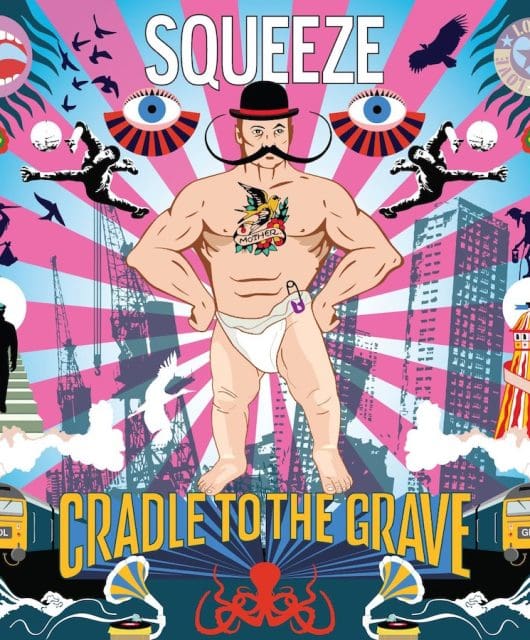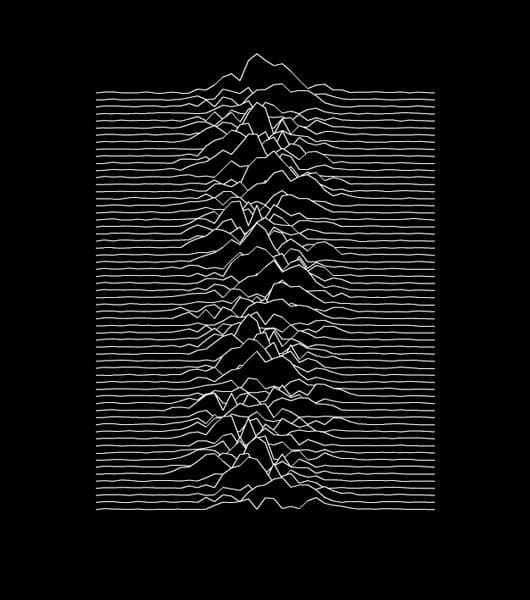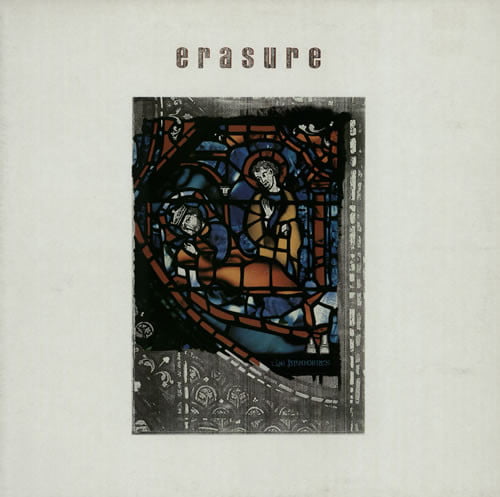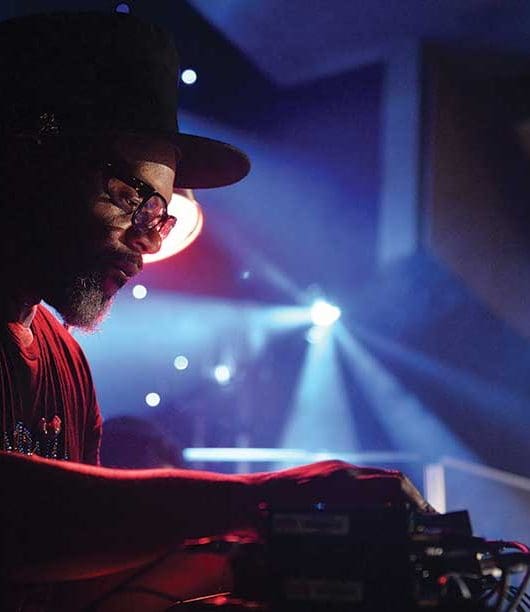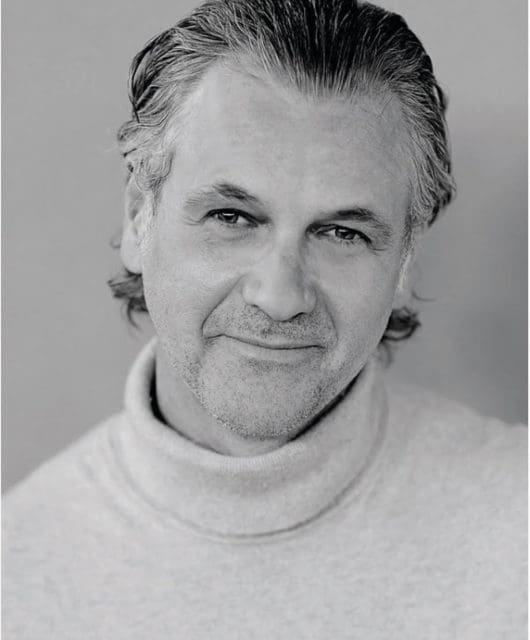Top 20 cover versions of the 80s
By Jon O'Brien | December 25, 2021
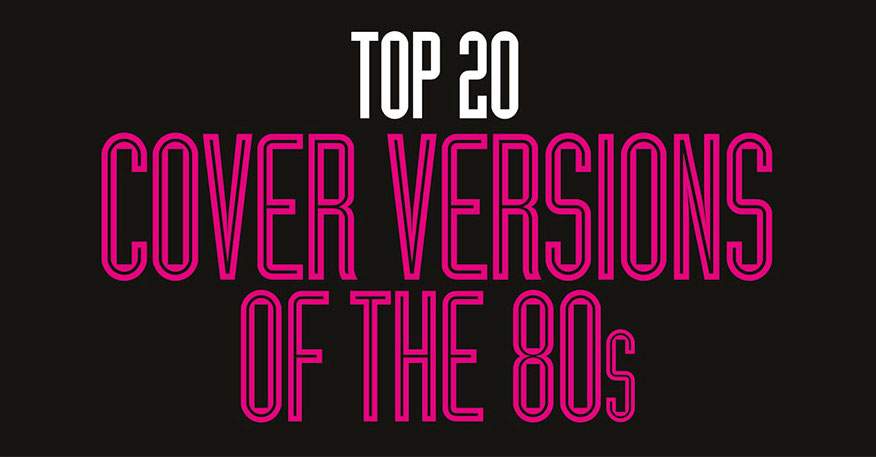
Breathing fresh life into old classics or radically reinventing them, we celebrate 20 of the finest 80s cover versions
The hit cover version is something of a rarity in today’s increasingly irrelevant charts. Why bother settling for a copy when the original is only ever a mouse click away? Back in the 80s, however, pop acts could help breathe new life into a song that wasn’t always readily available elsewhere, and in some cases, even get away with passing them off as their own. Ignoring any carbon copies (hence no Joan Jett & The Blackhearts’ straightforward take on Arrows’ I Love Rock And Roll, for example) and sticking entirely to UK Top 20 hits, here’s a look at the decade’s very best.
20 The Communards – Don’t Leave Me This Way
Jimmy Somerville tackled everything from Porgy And Bess showtune It Ain’t Necessarily So to Françoise Hardy’s Gallic pop classic Comment Te Dire Adieu under various guises. But his most triumphant cover was this Hi-NRG take on Harold Melvin & The Blue Notes’ Philly soul standard. In fact, Don’t Leave Me This Way was the UK’s biggest-selling single of 1986. While not quite surpassing the original, or indeed Thelma Houston’s rendition, Somerville’s signature falsetto complements Sarah Jane Morris’ much deeper timbre surprisingly well.
19 The Housemartins – Caravan Of Love
The fourth best band in Hull going a cappella on a squelchy synth spiritual from an Isley Brothers offshoot? Even in Norman Cook’s chameleonic back catalogue, Caravan Of Love still stands out as an oddity. Following in the footsteps of The Flying Pickets, this 1986 hit leaned firmly into The Housemartins’ self-described status as Christian Marxists. But Paul Heaton’s delivery of the subtly-changed lyric, “the place in which we were born/ So neglected and torn apart” suggests he was also sticking two fingers up at the Iron Lady.
18 Run-DMC – Walk This Way
Run-DMC’s take on Walk This Way revitalised Aerosmith, convinced MTV bosses hip-hop was a viable musical form and paved the way for everyone from Beastie Boys to Rage Against The Machine. Less impressively, it also gave us Limp Bizkit and the nadir of both Sugababes and Girls Aloud’s careers. The Adidas enthusiasts hadn’t even heard of Steven Tyler and co. when they started laying down some bars over their 1977 US hit: they were introduced to the track by producer Rick Rubin. But 40 years on its rap/rock fusion still sounds boxfresh.
17 Kim Wilde – You Keep Me Hangin’ On
Tom Jones, Colourbox and Vanilla Fudge were just a handful of the artists who’d put their own spin on The Supremes’ Motown classic. But only Kim Wilde’s managed to repeat its US No.1 success. Swapping Holland-Dozier-Holland’s Morse Code-inspired guitars and proto-funk beats for shimmering synths and dramatic orchestral stabs, this version appears to have SAW’s fingerprints all over it. Yet its everything-but-the-kitchen-sink production is, in fact, guided by the man who recognised You Keep Me Hangin’ On’s club potential, Wilde’s brother Ricky.
16 Natalie Cole – Pink Cadillac
Bruce Springsteen made Bette Midler a sworn enemy in 1983 when he kiboshed her recording of Pink Cadillac, a Born In The USA outtake later released as Dancing In The Dark’s B-side. The Boss believed its lyrics, in which the titular vehicle becomes a less-than-subtle metaphor for a certain part of the female anatomy, shouldn’t be uttered by the opposite sex. He had no such qualms later that decade, though, allowing Natalie Cole to diva up the original’s twanging blues with some strident dance-pop beats and vocals even sassier than Midler’s.
15 The Art Of Noise – Peter Gunn
The Art Of Noise went all couch potato for their first album since parting company with Paul Morley. 1986’s In Visible Silence not only featured a collaboration with one of the decade’s quintessential TV creations, Max Headroom, it also covered the coolest theme tune of the 1950s. Spoofing the eponymous private eye drama, its video even gave a starring role to Rik Mayall. Duane Eddy, the twanging guitar hero who first took Henry Mancini’s composition into the charts, also came on board to help the avant-garde collective bag their first and only Grammy.
14 Tiffany – I Think We’re Alone Now
Had we been ranking the decade’s worst covers, then Tiffany’s massacre of The Beatles’ I Saw Her Standing There may have grabbed No.1. But her debut single updated a 60s classic for the shopping mall crowd with far more finesse. The teen queen was reluctant to record Tommy James And The Shondells’ tale of hormonal teens, believing its bubblegum pop sound was too old-fashioned. Not that you’d know it. Tiffany attacks I Think We’re Alone Now with pure gusto, while the Hi-NRG-lite production ensured it easily slotted into the pop landscape.
13 Paul Young – Every time You Go Away
Paul Young had already staked his claim as one of his generation’s finest song interpreters when Every Time You Go Away topped the US charts in 1985. He’d previously made tracks by Ann Peebles, Nicky Thomas and Marvin Gaye his own, of course, also reaching UK No.1 with his version of the latter’s Wherever I Lay My Hat. But he has a fellow blue-eyed soul act, Hall And Oates, to thank for his crowning glory. The soulman draws even more emotion out
of the original, while Pino Palladino’s fretless bass magic elevates it to last-dance classic.
12 David Bowie – China Girl
A by-product of David Bowie and Iggy Pop’s self-imposed rehab years in Berlin, China Girl emerged on the latter’s The Idiot, as a gritty krautrock number recorded using a toy drum kit and piano. Six years later, and with a little spit and polish from Nile Rodgers, its co-writer transformed the track into something more suited to Studio 54. Bowie might have binned the original’s childlike instrumentation but he’s still in playful mode here, from the on-the-nose oriental riff to the crooner-like vocal which suggests that duet with Bing Crosby had quite the effect.
11 Robert Palmer – I Didn’t Mean To Turn You On
Robert Palmer was in recycling mode on the fourth single taken from Riptide. Its promo brought back the slightly uncoordinated group of mannequin-like models from Addicted To Love, and the song itself had been recorded two years earlier by Cherrelle. But while the original production was steeped in the synths of the Minneapolis sound, Bernard Edwards gave Palmer some much funkier guitars to wrap his tones around. I Didn’t Mean To Turn You On may have been overshadowed by its predecessor yet it’s by far the superior offering.
10 Bananarama – Venus
Inspired by the sonic thrills of Dead Or Alive’s You Spin Me Round, Bananarama practically railroaded SAW, then a rather modest operation, into repeating their Hi-NRG trick on a Dutch flower power anthem. The result began the trio’s transition from ramshackle new wave renegades to a much glossier set-up dealing in rehearsed choreography and pure unadulterated pop. This reinvention appeared to catch UK fans off-guard, though: Venus could only match the No.8 peak of the Shocking Blue original here but topped the charts in the US.
9 Simply Red – Money’s Too Tight (To Mention)
Simply Red became a critical punching bag for their MOR sound, yet Mick Hucknall came bursting out of the blocks with a defiant protest song he’d claim was “as big an anti-Thatcherite message as you can get in pop music”. A minor US R&B hit for The Valentine Brothers three years earlier, Money’s Too Tight (To Mention) was actually written in objection to Reaganomics (explaining that intriguing “did the Earth move for you Nancy?” ad-lib). But released in a period of mass UK unemployment, it struck a chord closer to home, too.
8 Kirsty MacColl – A New England
“It’s like a busker doing a really good Beatles song,” was how Kirsty MacColl described Billy Bragg’s A New England to Smash Hits. The late singer may have retained the original’s Fab Four-esque melodies with her own charming 1985 cover, but there’s nothing remotely busker-like about its joyous, jangly production from then-husband Steve Lillywhite. Bragg was so enamoured with the idea of MacColl gender-reversing his tale of romantic woes that he penned two extra verses for her to sing.
7 Pet Shop Boys – Always On My Mind
Always On My Mind also has a MacColl connection: it denied her duet with The Pogues the coveted Christmas No.1. While those who annually return Fairytale Of New York to the charts may consider this a pop injustice, Pet Shop Boys fans can counterargue it was beaten by one of the all-time great Elvis covers. This 1987 hit was originally intended solely for Love Me Tender, an ITV tribute marking 10 years since Presley’s passing. It was only when viewers demanded a release that PSB committed its bombastic synths and beats to record.
Read more: Top 40 Pet Shop Boys songs
6 Soft Cell – Tainted Love
Gloria Jones’ Tainted Love had long been a Northern Soul club staple before Marc Almond discovered its joys working as a cloakroom attendant. With producer Mike Thorne concerned that “you could smell the coke” on the frantic Wigan Casino favourite, Soft Cell slowed down the pace, transforming it into an electronic torch song that sounded equally vulnerable and malevolent. A record-breaking Billboard run and four-week UK No.1 stint followed, while its double synth stab remains one of pop’s most triumphant intros.
Read more: Soft Cell interview
5 Siouxsie and The Banshees – Dear Prudence
Just five years after covering Helter Skelter, Siouxsie And The Banshees once again doffed their caps to The Beatles, much to the reluctance of their star temporary guitarist. Robert Smith might not have been a particularly big fan of Dear Prudence, the ‘White Album’ cut inspired by Mia Farrow’s meditation-obsessed sister, but subverting all the optimistic talk of sunny skies and daisy chains, this version very nearly sent the nation’s pre-eminent goth rockers all the way to No.1. It’s little wonder many younger fans in 1983 believed this to be a Sioux original.
4 Yazz And The Plastic Population – The Only Way Is Up
What better way to signal the arrivalof an instant house-pop classic than the blaring of a train horn? Virtually unrecognisable from the mid-paced disco-soul of Otis Clay’s 1980 original, The Only Way Is Up triumphantly hurtles towards the four-minute mark, buoyed by its bubbling acid synths, excitable rhythms and a vocal which simply exudes pure positivity. Yazz had already displayed star potential on Doctorin’ The House but her second collaboration with Coldcut fulfilled it.
3 The Bangles – Hazy Shade Of Winter
One of the few occasions where Simon And Garfunkel came close to rocking out, Hazy Shade Of Winter also allowed The Bangles to replicate the harder-edged sound of their live shows. Produced by Rick Rubin, this 1987 cover was recorded for Less Than Zero, a divisive adaptation of Bret Easton Ellis’ novel starring Andrew McCarthy. But like the nihilistic film it came from, the US No.2 hit was something of a departure from the Brat Pack style, immersing the girl group’s glorious four-part harmonies not in bright new wave but menacing garage rock.
Read more: Top 20 girlband singles of the 80s
2 Chaka Khan – I Feel For You
Like many peerless pop moments, Melle Mel’s stuttering Chaka Khan shout-out on I Feel For You happened purely by accident. However, with Stevie Wonder’s fluttering harmonica solo, the song’s punchy electronic beats and the leading lady’s expressive vocal, the rest of Arif Mardin’s exuberant production was entirely intentional. It takes a lot to out-funk Prince but the Purple One’s falsetto-led 1979 original – first covered by The Pointer Sisters three years later – pales into comparison when heard alongside this four-week chart-topper.
1 Kim Carnes – Bette Davis Eyes
File this under ‘covers you never knew were covers.’ Well, not unless you’re familiar with the lesser-known recording output of Brill Building songwriter Jackie DeShannon. Even then you’d struggle to equate the old-fashioned country-rock of her 1975 track with the majestic synth-led treatment given by Kim Carnes six years later. Rod Stewart’s main challenger for pop’s raspiest voice had actually worked with DeShannon as an actress on late 60s folk-rock movie C’Mon, Let’s Live A Little. But it was Bette Davis Eyes’ co-writer Donna Weiss who introduced her to the song that would spend nine weeks atop the US charts (us Brits only sent it to No.10). Carnes’ version removed all the original’s dusty barroom vibes and instead brought it into the new wave era with a deliciously glacial synth hook and emphatic beats apparently programmed on the cheapest drum machine producer Val Garay could find. Even the famously difficult and cantankerous Bette Davis herself approved. The silver screen icon wrote thank-yous to all those involved for making her relevant again and sent flowers after the 1982 Grammys where Bette Davis Eyes deservedly picked up both Song and Record of the Year.


